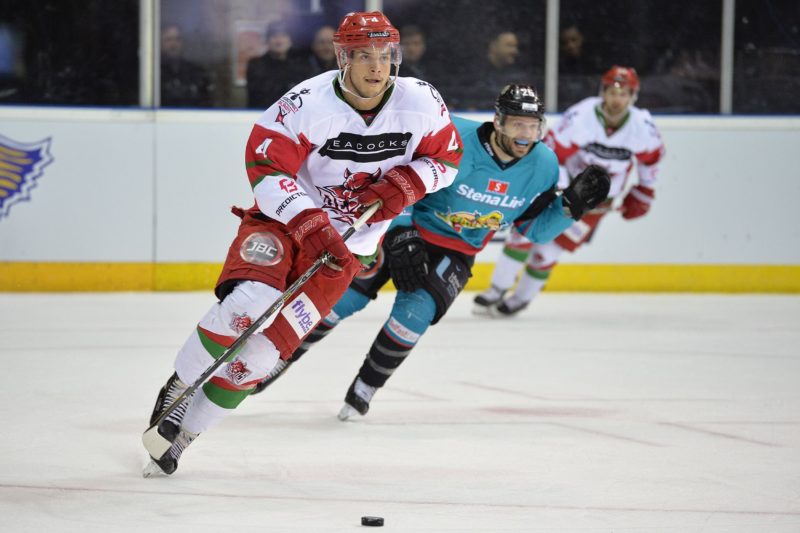
Legendary coach Roger Neilson made his mark on the world of hockey with his innovative and frequently controversial techniques, including pioneering use of video and analytics to learn more about opposing teams. He is also credited as being the first to use microphone communication between coaches and assistants. At the time, his approach was met with scepticism by many hockey fans, and his use of technology earned him the slightly mocking nickname of Captain Video.
History has, of course, vindicated the great man and his forward-thinking vision, and today much more advanced analytics and other tech are embedded into most mainstream sports – hockey very much included. The past few years have seen a surge in the use of tech in hockey, with wide-ranging applications. Unsurprisingly, the NHL has adopted more of these techs than the UK, which is mostly down to massively bigger budgets – but hockey here isn’t far behind. Here are some of the technologies of the present and future that are changing hockey for both players and fans.
Analytics and Tracking
These days, there’s no need to spend all night studying grainy videos to gain an understanding of match dynamics as Neilson had to do. The current NHL season is testing a brand new puck and player tracking system developed in conjunction with six tech companies. It has the capacity to generate stats in real time relating to many aspects of player performance, such as speed, acceleration and distance.
All this gives coaches and teams an arsenal of empirical data on how to improve individual players, fine-tune strategies based on how different opposing teams play, and identify areas of weakness within teams – as well as reducing injury rates. Many companies are also working on software to help further automate the analysis and interpretation of the data gathered through tracking.
How New Technologies Affect Sports Betting
Technological progress also has significant applications for fan engagement, in particular surrounding how information is made available for legal sports wagering. It won’t be long before real-time information is made available to new online bookmakers, giving punters a potentially huge number of individual in-game bets to choose from, with odds continually updated. Find out more here about legitimate new betting sites that could benefit from this technology.
One of the tech firms creating a real-time betting app is British sports data company Genius Sports. The company’s prototype uses graphical visualisation of data for a user-friendly experience. The sources of the data are pucks embedded with chips, while players are tracked from chips in their shoulder-pads – an approach that has already proved successful in the US National Football League.
5G Wireless Tech
Another potential boost to sports wagering is the imminent roll-out of 5G networks across the UK and North America. 5G will have a much greater capacity for multiple simultaneous connections, as well as improving latency speeds for faster refresh rates.
This would have an appreciative effect on how hockey fans are able to engage and interact with matches when watching from inside a stadium – for example, giving them the option to place in-game wagers on a number of individual outcomes. Coupled with the detailed statistical data available from the tracking equipment, 5G connectivity will make legal sports betting more accessible and interactive than ever before.
Equipment and Clothing
Wearable tracking chips are just one aspect of how technology is being applied to equipment and clothing in hockey. Indeed, the sticks and kit used today are a far cry from what they used to be. They have become both stronger and more lightweight, with the old wooden sticks replaced by carbon composites that facilitate the transfer of as much energy as possible from stick to puck without the risk of breakage.
Protective gear has also benefited from advances in technology, allowing significant decreases in weight with a concurrent improvement in wearability and resilience. Hockey clothing and equipment manufacturers Bauer have developed 3D scanning that maps the exact dimensions of an individual player. The data can then be used to make shoulder, shin and elbow pads that fit to their precise measurements.
Goal-Line Technology
While the NHL were one of the first sports leagues to implement some kind of goal-line technology as far back as the 1990s, many other sports subsequently pulled ahead in the application of more advanced systems. Hawk-Eye, the ultra-accurate tech used in sports such as tennis, cricket and football, has more recently been implemented in NHL venues to great effect.
This is seen by many as a long-overdue move, as previous video tech still regularly returned ambiguous footage from which to make decisions. Hawk-Eye’s various tech innovations have wider applications for hockey as well, for example for fan engagement on digital platforms. Their SMART Replay also makes live and recorded video footage available to key stakeholders such as coaches, officials and medical teams.
Virtual Reality Training
Ice hockey became the very first sport to implement virtual reality technology for training purposes, when Czech innovators Sense Arena unveiled a virtual training environment designed to improve hockey skills off the ice. The platform was developed with input from professional players, and provides drills designed to improve their mental hockey skills – what’s known as hockey sense, hence the name – in areas such as reaction times, anticipation and decision making, and the tracking of multiple objects.
The tech has already been taken up by several professional hockey teams, the first of which were the NHL’s Vegas Golden Knights. The club believe that the availability of the immersive training platform will give them a competitive advantage, helping both professional and upcoming youth players to improve their game beyond their time on the ice.
Race to the Top
So, in contrast with the days of Neilson, it seems like the hockey world is enthusiastically embracing and adopting new technologies in many aspects of the game. It’s no wonder that teams are keen to use every available resource to improve their game and enhance the fan experience – after all, there’s a lot of money in the North American game. Even in the UK, where salaries are considerably less extravagant, it seems inevitable that tech will be integrated into practically every aspect of the game before long.








